+86-18927501869
- All
- Product Name
- Product Keyword
- Product Model
- Product Summary
- Product Description
- Multi Field Search
 English
EnglishViews: 1622 Author: Allen Yi Publish Time: 2025-07-20 Origin: Site
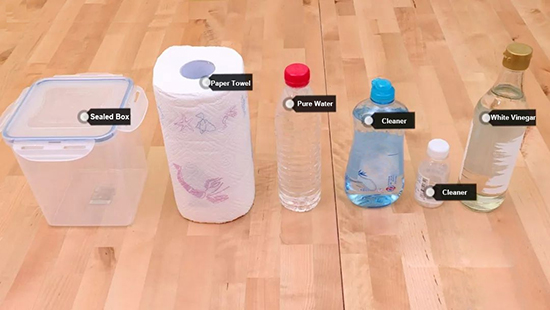
Preparation Tools for Homemade Baby Wipes
As a parent, you understand the importance of baby wipes, especially when it comes to those formulated for sensitive skin. Unfortunately, many commercial options contain harsh chemicals, fragrances, and preservatives that can irritate delicate skin. That's why more and more parents are opting for homemade baby wipes, which offer a gentle, customizable, and cost-effective alternative. By making your wipes, you gain control over the ingredients, ensuring a safer, more soothing experience for your baby.
Sywipe, a leading baby wipes manufacturer, is here to guide you through 6 DIY methods for creating your baby wipes at home. Whether you prefer disposable wipes or reusable cloth options, this comprehensive guide will show you how to use natural ingredients to make wipes that are both effective and gentle. With these easy-to-follow methods, you'll not only save money but also gain peace of mind knowing exactly what's touching your baby's sensitive skin.
Before we dive into the methods and materials for Homemade Baby Wipes, gather these essential items:
Choose soft and gentle tissue suitable for sensitive baby skin.
Use warm water to moisten the wipes.
Optionally, include aloe vera gel for its soothing properties.
Optionally, add coconut oil or baby oil for extra moisturization.
Optionally, you can include a few drops of essential oil for a pleasant fragrance. Ensure the chosen essential oil is safe for baby use.
A container with a tight-fitting lid to store and keep the wipes moist.
Ensure that all chosen materials are free from harsh chemicals and fragrances that may irritate a baby's delicate skin.
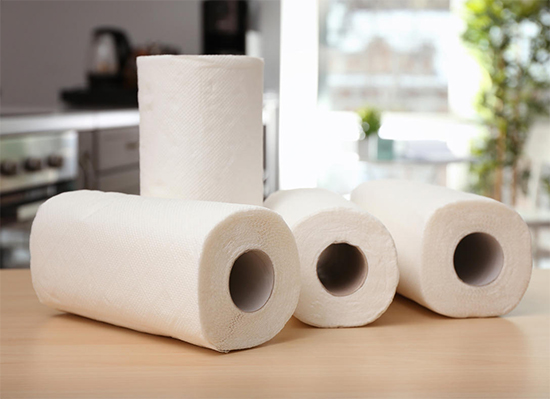
Paper Roll for Wet Wipes Baby
Making healthy baby wipes out of paper towels is a simple and cost-effective DIY solution. Here's a basic method:
• Roll of strong, absorbent paper towels
• Warm water
• Gentle baby wash or shampoo
• Coconut oil or baby oil (optional)
• Container with a tight-fitting lid
1. Cut the Paper Towels:
Using a sharp knife, cut the roll of paper towels in half horizontally. This will create two shorter rolls.
2. Remove Cardboard Core:
Pull out the cardboard core from the center of each half. This step is essential for allowing the paper towels to easily dispense from the center.
3. Prepare Wipes Solution:
In a mixing bowl, combine warm water with a small amount of gentle baby wash or shampoo. Optionally, you can add a teaspoon of coconut oil or baby oil for added moisturization.
4. Gentle Homemade Solution Method:
This approach is ideal for parents who prefer complete control over ingredients. Unlike commercial wipes, you can customize solutions for your baby's unique skin needs.
Create the solution by mixing 40°C warm water with 【pH-balanced baby shampoo (5.5 pH)】 (recommended 1:200 ratio), then soak 【100% organic cotton squares】 until damp.
Pro Tip: Add 【1 drop diluted lavender oil】 for calming effects (safe for babies 6+ months).
5. Soak the Paper Towels:
Place one of the paper towel halves in the container.
Pour the prepared wipes solution over the paper towels, ensuring they are thoroughly soaked. You may need to flip the roll to soak both sides.
6. Separate Wipes:
Once the paper towels are saturated, carefully pull out the cardboard tube from the center.
Pull the starting end of the paper towel from the center and thread it through the container's lid.
7. Seal the Container:
Secure the lid tightly to keep the wipes moist and prevent them from drying out.
8. Dispense Wipes:
When you need a wipe, pull it through the lid's opening, and tear it off at the perforation.
This DIY method allows you to control the ingredients and avoid unnecessary additives that may be present in commercial wipes. Always check for any allergic reactions, and discontinue use if irritation occurs. Additionally, ensure the container is sealed between uses to maintain the wipes' moisture.
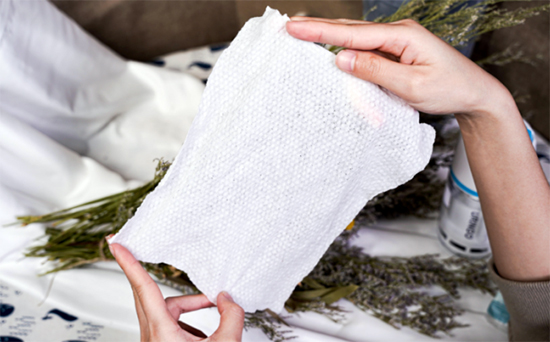
Tensile Strength of Baby Wet Wipes
To create baby wipes suitable for sensitive skin, you can follow these steps:
• Soft, fragrance-free, or additive-free tissue
• Warm water
• Plant oil (such as olive oil or sweet almond oil)
• Optional: Aloe vera gel or a chamomile tea bag
1. Prepare the Workspace:
Ensure your workspace is clean, and wash your hands to maintain hygiene for baby wipes without chemicals.
2. Select Soft Tissue:
Choose soft, fragrance-free, or additive-free tissue. Make sure it does not contain potentially irritating ingredients for sensitive skin.
3. Prepare Warm Water:
Prepare an appropriate amount of warm water for soaking the baby face wipes.
4. Add Plant Oil:
Add some plant oil (like olive oil or sweet almond oil) to the warm water. This helps provide additional moisturization, suitable for sensitive skin.
5. Optional-Add Aloe Vera Gel or Chamomile Tea:
If your baby's skin tolerates aloe vera or chamomile, consider adding a small amount of aloe vera gel or steeping a chamomile tea bag in warm water for its soothing and anti-inflammatory properties.
6. Soak the Tissue:
Place the tissue into the mixture, ensuring it absorbs enough water and oil to become moist.
7. Place in a Wipe Container:
Transfer the soaked tissue into a wipe or sealed container to maintain moisture.
8. Seal for Storage:
Seal the wipe container or storage to prevent the wipes from drying out when not in use.
9. Maintain Cleanliness:
Regularly change the baby's soft baby wipes to ensure they remain clean, moist, and bacteria-free.
This method focuses on using gentle ingredients suitable for sensitive skin. Ensure that the chosen materials do not contain irritants, and discontinue use if allergic reactions occur.
Water Content of Wet Wipes
Best for: Parents looking for sustainable baby wipes for sensitive skin
• Soft flannel or bamboo fabric squares (hypoallergenic)
• 1 cup distilled water
• 1 tbsp chamomile tea (cooled) (calms irritated skin)
• 1 tbsp olive oil (natural moisturizer)
1. Cut fabric into 8x8-inch squares (or use pre-made cloth wipes).
2. Mix water, chamomile tea, and olive oil in a spray bottle.
3. Lightly spray the cloth before use or store pre-moistened wipes in a wet bag.
4. Wash with mild detergent after use.
Why This Works: Bamboo fabric is naturally antibacterial and ultra-soft, making it perfect for baby wipes for eczema-prone skin.
Best for: Babies with dry or irritated skin
• 2 cups distilled water
• 1 tbsp calendula oil (heals rashes)
• 3 drops lavender essential oil (anti-inflammatory)
• 1 tsp castile soap (unscented)
Note: Always patch-test essential oils before full use.
1. Combine all ingredients in a glass spray bottle.
2. Spray onto soft paper towels or cloth wipes as needed.
3. Benefits: Lavender and calendula are clinically proven to help with baby diaper rash and sensitive skin.
Creating flushable baby wipes involves using materials that easily break down in water to prevent plumbing issues. Here's a method for making flushable baby wipes:
• Flushable or dispersible tissue
• Warm water
• Aloe vera gel (optional)
• Coconut oil or baby oil (optional)
• Essential oil (optional, for fragrance)
• Container with a tight-fitting lid
1. Select Flushable Tissue:
Choose tissue specifically labeled as flushable or dispersible. These are designed to break down in water and are less likely to cause plumbing problems.
2. Cut Tissue to Size:
If the chosen tissue is too large, cut it into the desired wipe size using scissors.
3. Prepare Wipes Solution:
In a mixing bowl, combine warm water with a small amount of aloe vera gel, coconut oil or baby oil, and a few drops of essential oil if you desire fragrance. Mix well.
4. Soak the Tissue:
Submerge the cut tissue pieces in the prepared wipes solution, ensuring they are fully saturated.
5. Place in Container:
Transfer the soaked tissue into a container with a tight-fitting lid. Ensure the container is labeled as flushable or dispersible.
6. Seal the Container:
Seal the container tightly to maintain the moisture of the natural baby wipes.
7. Use Responsibly:
Only flush one or two flushable baby wipes at a time to avoid plumbing issues. Even though these biodegradable natural baby wipes are designed to be flushable, excessive use can still contribute to blockages.
8. Store in a Cool Place:
Store the container in a cool place to prevent the wipes from drying out.
Always check with your local wastewater treatment guidelines to ensure the flushable wipes are compatible with your plumbing system. Additionally, be mindful of the environmental impact, and consider other disposal methods if flushing is not recommended in your area.
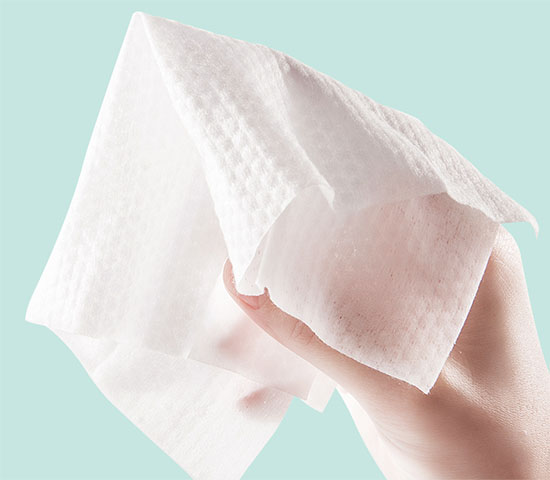
The Pearl Texture of Baby Wet Wipes
Best for: Newborns or babies with severe skin sensitivities, eczema, or allergies
• Distilled or sterilized water (prevents bacterial growth)
• Soft, pre-folded paper towels or bamboo cloth wipes
• Airtight container or thermal wipe dispenser (keeps wipes fresh)
1. Boil water for 5 minutes, then cool completely (or use distilled water).
2. Fold paper towels in a zig-zag pattern (or stack cloth wipes).
3. Place wipes in a sealed container and pour water over them.
4. Store in the fridge for extra freshness (lasts up to 1 week).
Pro Tips:
• For extra hygiene, microwave dampened wipes for 10 seconds before use (cool first!).
• Add a drop of chamomile tea (cooled) for mild soothing properties (optional).
When you're creating baby wipes for sensitive skin, you must avoid certain ingredients that can cause irritation or allergic reactions. Here's a list of ingredients that are best left out of your DIY wipes:
Alcohol: Drying and irritating to sensitive skin.
Parabens and Phthalates: Common preservatives and fragrance ingredients linked to skin irritation and hormonal disruption.
Artificial Colors: Synthetic dyes can cause allergic reactions and irritate the skin.
Fragrances: These can be particularly harmful to babies with sensitive skin, causing rashes or redness.
You can repurpose baby wipes into disinfectant wipes with the right ingredients. Here's a simple method:
• Water baby wipes
• Isopropyl alcohol (at least 60% alcohol content)
• Distilled water
• Aloe vera gel (optional)
• Essential oil (optional, for fragrance)
• Sealable container
1. Prepare Wipes:
Place a stack of baby wipes in a sealable container.
2. Mix Disinfectant Solution:
In a separate bowl, mix 1 cup of isopropyl alcohol with 1/4 cup of distilled water. Ensure the alcohol content is at least 60%. This solution is effective for disinfection.
3. Optional Additions:
If you want to add moisturizing properties, include 1-2 tablespoons of aloe vera gel. You may also add a few drops of essential oil for fragrance, but this is optional.
4. Pour Solution Over Wipes:
Pour the prepared disinfectant solution over the baby wipes in the container. Ensure the wipes are thoroughly saturated.
5. Seal the Container:
Seal the container tightly to prevent the wipes from drying out.
6. Allow Absorption:
Allow some time for the wipes to absorb the disinfectant solution.
7. Use as Needed:
Once the wipes are saturated, you can use them as needed for disinfecting surfaces.
Remember to label the container clearly to indicate that these wipes are now disinfectant. This DIY method provides an easy way to create disinfectant wipes at home. Always follow proper safety guidelines when using and storing disinfectants, and ensure that the alcohol content is at an effective level for disinfection.
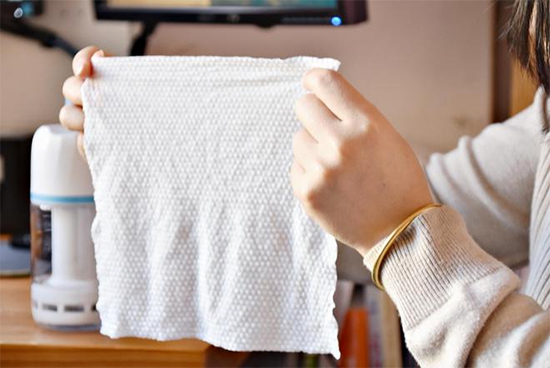
You're Done!
You can repurpose baby wipes to create dog wipes. However, it's crucial to ensure that the ingredients used are safe for dogs, and the wipes are free from substances that might irritate. Here's a simple method:
• Baby wipes ingredients (fragrance-free and alcohol-free)
• Water
• Aloe vera gel (optional)
• Coconut oil (optional)
• Essential oil (dog-safe and optional)
• Sealable container
1. Select Baby Wipes:
Choose fragrance-free and alcohol-free baby wipes to minimize the risk of irritation for your dog.
2. Prepare Dog-Friendly Solution:
In a separate bowl, mix water with a small amount of aloe vera gel and coconut oil. Optionally, add a few drops of dog-safe essential oil for a pleasant scent.
3. Soak the Wipes:
Place the baby wipes in a sealable container and pour the prepared dog-friendly solution over them. Make sure the wipes are fully saturated.
4. Allow Absorption:
Allow some time for the natural baby wipes to absorb the solution.
5. Seal the Container:
Seal the container tightly to keep the wipes moist.
6. Use as Dog Wipes:
Use the wipes as needed for cleaning your dog's paws, fur, or any other areas. Ensure the wipes do not come into contact with your dog's eyes, ears, or nose.
7. Label the Container:
Clearly label the container to indicate that these wipes are intended for use on dogs.
Always monitor your dog for any signs of irritation or allergic reactions when using wipes. If your dog has a known sensitivity to certain ingredients, it's advisable to consult with your veterinarian before using homemade dog wipes. Additionally, avoid using wipes on sensitive areas like the face, and dispose of used wipes properly.
Biodegradable and Flushable Baby Wipes
You can repurpose baby wipes to create adult wipes by adjusting the ingredients to suit the needs of adults. Here's a simple method:
• Baby wipes (fragrance-free and suitable for sensitive skin)
• Water
• Aloe vera gel
• Coconut oil or jojoba oil
• Essential oil (optional, for fragrance)
• Sealable container
1. Select Fragrance-Free Baby Wipes:
Choose healthy baby wipes that are fragrance-free and suitable for sensitive skin. This helps minimize the risk of irritation for adults.
2. Prepare Adult-Friendly Solution:
In a separate bowl, mix water with aloe vera gel and a small amount of coconut oil or jojoba oil. Optionally, add a few drops of essential oil for fragrance.
3. Soak the Wipes:
Place the baby wipes in a sealable container and pour the prepared adult-friendly solution over them. Ensure the wipes are fully saturated.
4. Allow Absorption:
Allow some time for the wipes to absorb the solution.
5. Seal the Container:
Seal the container tightly to keep the wipes moist.
6. Use as Adult Wipes:
Use the wipes as needed for personal hygiene. They are particularly useful for freshening up, cleaning hands, or general personal care.
7. Label the Container:
Clearly label the container to indicate that these wipes are intended for use by adults.
Always check for any signs of irritation when using wipes, and discontinue use if any adverse reactions occur. Additionally, be mindful of any allergies to specific ingredients. This DIY method provides a convenient way to create adult wipes tailored to individual preferences and sensitivities.
If your baby wipes have dried out, you can easily re-moisten them to make them usable again. Here's a simple method:
• Dried-out baby wipes
• Warm water
• A large sealable plastic bag or an airtight container
1. Place the Wipes in a Bag or Container:
Arrange the dried-out healthy baby wipes in a large sealable plastic bag or an airtight container. Ensure there is enough space for the wipes to be evenly moistened.
2. Add Warm Water:
Pour warm water into the bag or container. Start with a small amount to avoid over-saturating the wipes initially.
3. Allow Absorption:
Seal the bag or container and allow the wipes to absorb the water. You can gently massage the wipes through the bag or container to help distribute the moisture evenly.
4. Check Consistency:
After some time, check the consistency of the wipes. If they are not moist enough, add more warm water gradually until you achieve the desired level of moisture.
5. Seal and Wait:
Seal the bag or container again and let the wet wipes sit for a few hours to ensure they fully absorb the water.
6. Test and Adjust:
Test a wipe to see if it's adequately moistened. If needed, adjust the moisture level by adding more water or allowing them to sit longer.
7. Store Moistened Wipes:
Once the alcohol free baby wipes are sufficiently moistened, you can store them in a sealed bag or container for future use.
Always be cautious not to oversaturate the wet wipes, as this can lead to tearing or a soggy consistency. It's better to add water gradually until you reach the desired level of moisture. Additionally, store the moistened wipes in a sealed container to prevent them from drying out again.
The number of wipes a baby uses can vary widely based on factors such as the baby's age, diapering habits, and the specific needs of each baby. However, on average, you can expect to use approximately 2,500 to 3,000 wipes in the first year of your baby's life.
Newborns to Infants (0-6 months): In the early months, babies may require more frequent diaper changes. On average, you might use 8 to 12 wipes per diaper change. With an average of 8 diaper changes per day, you could use around 64 to 96 wipes daily.
Infants to Toddlers (6-12 months): As babies grow, they may require fewer diaper changes. You might still use around 6 to 8 wipes per diaper change, averaging around 48 to 64 wipes daily with approximately 6 diaper changes.
Additionally, some parents may choose to use reusable cloth wipes, which can reduce the overall quantity of wipes needed over time. It's always a good idea to have an ample supply of wipes on hand, as they are versatile and useful for various baby care tasks beyond just diaper changes.
A: Bamboo or organic cotton—both are breathable and gentle on sensitive skin.
A: Up to 2 weeks in the fridge (for disposable wipes). Reusable cloth wipes last indefinitely with proper washing.
A: Yes! Just avoid essential oils for newborns under 3 months.
Making baby wipes for sensitive skin at home is a fantastic way to ensure that your baby's skin stays healthy and irritation-free. By using simple, natural ingredients, you can create wipes that are safe, effective, and gentle on your baby's delicate skin. Whether you choose to make your own or buy from trusted brands, always keep in mind the importance of choosing the right ingredients to keep your little one comfortable.
Incorporating DIY methods into your daily routine can not only save you money but also give you peace of mind knowing exactly what's in the products you use. So, the next time you need to clean up your baby, consider using these gentle wipes for babies, whether homemade or store-bought, and watch their sensitive skin stay calm and protected
Sywipe seizes every opportunity to use high-quality resources, including peer-reviewed research, to support the facts in our article. Learn more about our factory and how to keep the content accurate, reliable, and trustworthy.
How to Choose the Best Wipes for Baby Skin?
21 Best Baby Wipes for Sensitive Skin in 2025
How to Choose the Best Natural Baby Wipes for Sensitive Skin?
Why Natural Baby Wipes are Essential for Newborn Skin Care?
Our Customers Always Come First
Trust is the Foundation of Our Service
sales@clean-wipe.com
sywipe@clean-wipe.com
Room 4611, No. 372 Huanshi East Road, Yuexiu District, Guangzhou,China.
+86-18927501869 / +86-20-81608597
/ +86-18927501869